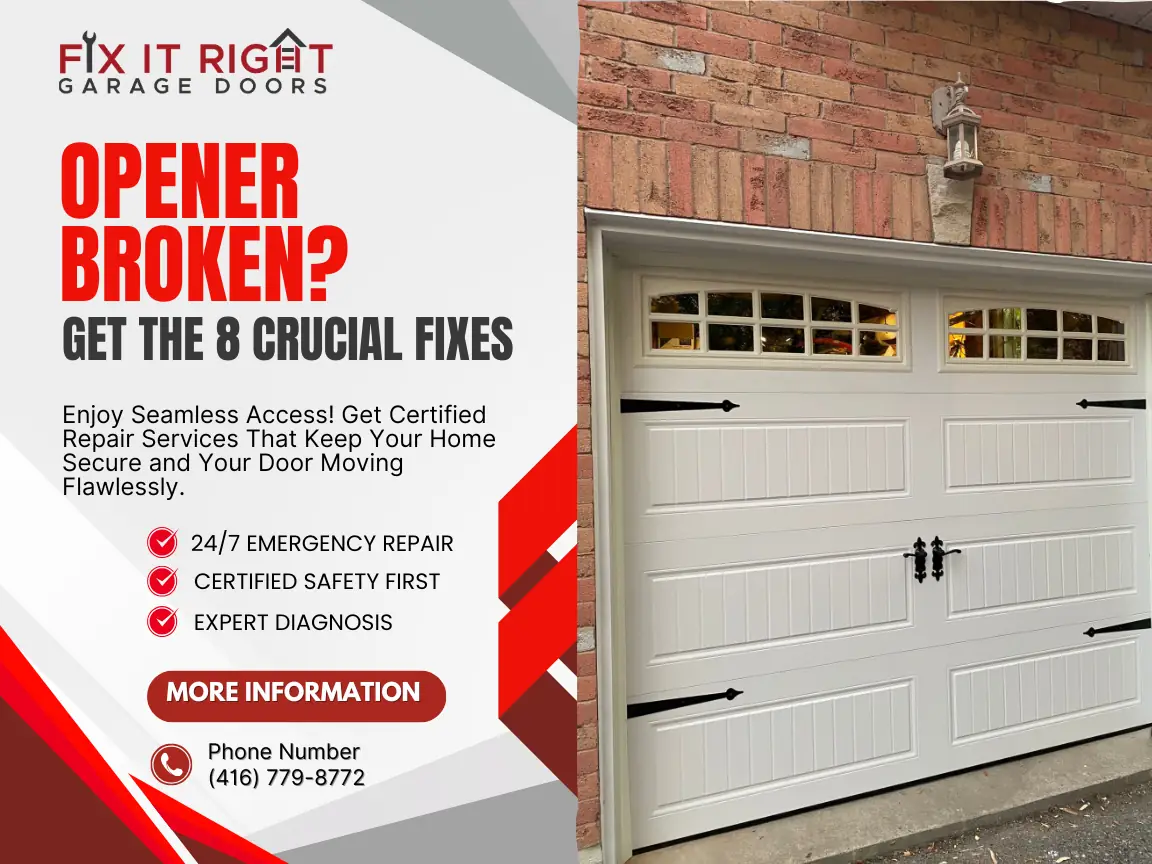Picture this: you’re driving home on a rainy day, eager to get inside without soaking yourself. Instead of fumbling for a separate remote, you simply press a button on your car’s built-in console, and your garage door opens effortlessly. Sound appealing? Learning how to program car with a garage door opener can make that scenario a reality!
In this guide, we’ll show you how to sync your vehicle’s integrated controls with a variety of garage door openers, step by step. We’ll also explore common issues, safety considerations, and time-saving shortcuts, so you can enhance both convenience and security. Whether you drive a compact sedan or a luxury SUV, most modern vehicles offer straightforward ways to pair with your garage door system. Let’s jump right in!
Pro Tip: Before beginning, make sure you have your garage door remote handy and check that your vehicle’s battery is sufficiently charged. These small steps can prevent hiccups later on.


Understanding Your Vehicle’s Built-In Garage Door Opener System
What Is a Built-In Garage Door Opener?
Cars equipped with a built-in garage door opener (sometimes called HomeLink, Car2U, or Universal Garage Door Opener) allow you to operate your garage door, and in some cases even security gates, from a console in the car—typically on the overhead panel, sun visor, or rearview mirror.
- Convenience: Eliminate the need for a separate remote
- Security: Less clutter and fewer loose remotes lying around
- Multi-Device Control: Many systems let you program more than one garage or gate
Is Your System Compatible?
Before you program your car with a garage door opener, ensure that your vehicle’s system supports your specific brand of opener. Most standard openers (Chamberlain, LiftMaster, Genie, etc.) work with modern car systems. However, older or very specialized openers may require additional adapters.
Real-World Example: Lisa found out her 2006 sedan’s built-in controls wouldn’t automatically sync with a newer smart opener. A quick call to the opener’s manufacturer revealed she needed a compatibility bridge, solving her issue immediately.
Preparing to Program Car With a Garage Door Opener: Essential Checks
Know Your Remote
Many garage doors come with at least one handheld remote. You’ll need it to sync signals during the programming process. If your remote is misplaced or broken, replace it before proceeding, or consider contacting a professional service like Fix It Right Garage Doors to help you reprogram the opener directly.
Clear Previous Settings
If you bought a used car, it might already have the previous owner’s garage programmed into the system. Always clear old codes first:
- Locate the Car’s Opener Buttons: Typically found on the overhead console or driver’s visor.
- Press and Hold: Simultaneously press the outer two buttons for about 10-20 seconds until the indicator light changes or blinks.
- Confirmation: A rapid flash or a specific beep usually indicates cleared settings.
Expert Tip: Clearing old codes prevents someone else’s garage settings from conflicting with yours, which is important for security and ensuring a smooth reprogramming experience.
Check Power Sources
- Car Battery: A weak battery could hamper the programming process, especially if your car’s electrical system shuts off to conserve power.
- Garage Door Opener Power: Make sure the garage door opener is plugged in and operational. Test it by using your existing remote to open and close the door once or twice.
Step-by-Step: How to Program Your Car with a Garage Door Opener
Below is a handy table summarizing the general steps. Note that specific instructions can vary depending on your car’s make/model and the garage door opener brand. Always consult your vehicle’s owner’s manual in conjunction with this guide.
| Step | Action | Typical Duration | Tools Needed |
|---|---|---|---|
| 1 | Clear old codes | 10–20 seconds | None |
| 2 | Choose which button to program | – | Car’s overhead/visor console |
| 3 | Press the “learn” or “smart” button on the opener | 15–30 seconds | Ladder (if opener is ceiling-mounted) |
| 4 | Sync with handheld remote (optional) | ~ 30 seconds | Handheld garage door remote |
| 5 | Test and confirm | 30 seconds | None |
Step One: Clear Old Codes
As mentioned, press and hold the outer two buttons on your overhead console or visor until the indicator light confirms the reset.
Step Two: Select the Button to Program
Your car’s built-in system usually has up to three buttons. Decide which one you want to associate with your garage door. This choice can’t be changed easily once set, so pick a button you’ll remember intuitively.
Step Three: Locate the “Learn” or “Smart” Button
On your garage door opener unit, usually mounted on the ceiling, there’s a small button labeled “Learn,” “Smart,” or “Program.” This sets the opener into “listening” mode so it can accept new remote inputs.
- Press the “Learn” button once.
- Watch for an LED: It often flashes or lights solid.
- Time Window: You typically have about 30 seconds to send a signal from your car.
Step Four: Press the Selected Car Button
Back in your vehicle, press and hold the button you chose to program. Some cars require you to press it twice or hold it until the vehicle’s display or overhead indicator flashes. If you’re unsure, consult your manual for the exact method.
Real-World Example: Jeff’s Ford F-150 required him to press the program button in the truck for two seconds, release it, then press it again for two seconds to finalize the setup. Once done, his garage door opened seamlessly.
Step Five: Sync with Handheld Remote (If Needed)
Some systems also require you to hold your handheld remote close to the car’s visor/console while pressing both the remote button and the in-car button simultaneously. This helps the vehicle copy the door’s unique frequency and rolling code.
Important: Rolling code technology changes the signal each time you open your garage to prevent code theft. Make sure your car’s system supports rolling code if your opener uses it (most modern ones do).
Step Six: Test the Connection
Exit your car, close the garage door using the wall console or remote, then get back in and press the newly programmed button. If the door opens or closes, you’ve successfully learned how to program your car with a garage door opener!
Troubleshooting Tips
Sometimes, following the instructions to program your car with a garage door opener doesn’t go as planned. Here are a few common hiccups and solutions:
- Unresponsive Car Button
- Ensure you’ve cleared previous codes correctly.
- Check if the car’s battery or fuse associated with the console is functioning.
- Opener Doesn’t Enter “Learn” Mode
- Some openers have a separate “smart” button on an external receiver. Locate that and try again.
- Confirm the opener’s LED indicators aren’t signaling an internal error (e.g., blinking patterns might indicate a motor or circuit board issue).
- Remote Range Issues
- Position matters! Hold your handheld remote close to the car’s overhead console (within 1-2 inches) while programming.
- Metal roofs, tinted windshields, or certain electronics can interfere with signals.
- Multiple Doors or Gates
- If you have two different garage doors or a security gate, repeat the process for each device, using separate buttons on your car’s overhead console.
- Check that each door or gate is powered and operational before attempting multi-device programming.
- Consult the Manual
- Different car brands (Toyota vs. Ford) and opener brands (Genie vs. LiftMaster) can have unique sequences. If the basic approach doesn’t work, your owner’s manual is your best friend.
Safety Note: Always keep clear of the garage door’s path when testing it. Make sure children and pets stay at a safe distance.
Maintenance and Security Considerations
Regular Checks
Just like any other part of your car or home, the garage door opener system benefits from periodic inspections:
- Ensure Connections Are Secure: Loose wiring in the opener can cause intermittent operation.
- Clean Sensors and Lenses: Any dust or obstruction can interfere with signal reception.
- Battery Replacements: Some built-in systems are powered partly by the car’s battery, while others rely on a small internal battery. Keep these in mind during regular tune-ups.
Upgrading to Smart Features
If you’re investing time to program your car with a garage door opener, consider whether an upgrade to a Wi-Fi-enabled unit is worthwhile. Modern openers integrate with smartphone apps, letting you monitor and operate your garage door remotely. This is particularly helpful if:
- You frequently travel and want to check on your home.
- You’re interested in automated home security systems.
- You manage deliveries or visitors while away.
Security Alerts
A built-in car remote is more secure than leaving a loose remote on your visor, where thieves can quickly snag it. However, if you lose your car or sell it, always erase the codes from the vehicle. This prevents unauthorized access to your garage in the future.
Expert Advice: If your home’s garage door is older and lacks rolling code technology, consider upgrading to a newer model. Static codes are more vulnerable to hacking devices.
Alternative Programming Methods for Older Cars or Openers
Not all vehicles or garage door openers are fresh off the assembly line. If yours is a bit more dated:
- Aftermarket Universal Remotes: Some universal kits can be mounted inside your car, functioning similarly to built-in systems.
- Bridge Modules: If the car’s console doesn’t support rolling codes, a bridge module can translate signals, ensuring compatibility with newer openers.
- Professional Assistance: Companies like Fix It Right Garage Doors specialize in pairing old and new systems safely and efficiently.
Real-World Example: Emma’s 1999 Toyota Camry lacked integrated controls. She opted for a universal remote solution tucked neatly in her visor, offering nearly the same convenience as a built-in system.
Frequently Asked Questions
Conclusion
Congratulations! You’ve just learned how to program your car with a garage door opener. With a little patience, the right prep, and a step-by-step approach, you’ll be cruising into your garage with minimal effort. Enjoy the peace of mind that comes from reducing clutter (that separate remote) and bolstering home security at the same time.
Still facing hiccups? Don’t hesitate to reach out to professionals like Fix It Right Garage Doors. They can provide troubleshooting support, install compatibility bridges, or even replace outdated openers. After all, maximizing convenience shouldn’t come at the expense of safety!
Before You Go, Ask Yourself:
- How old is your garage door opener, and does it support modern rolling-code technology?
- Are you interested in upgrading to a Wi-Fi-enabled model for additional smartphone control and security?
- Could regular maintenance or professional guidance give you an even smoother, safer garage experience?
Feel free to drop your questions or experiences in the comments below. We’d love to hear how this guide helped you streamline your daily drive and fortify your home security. Happy programming!










